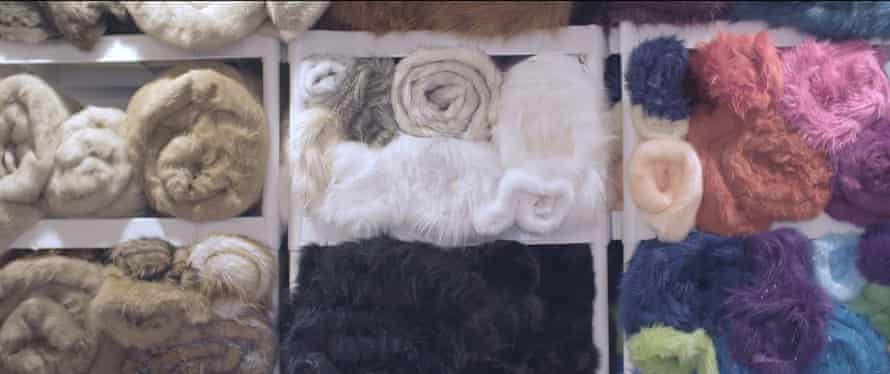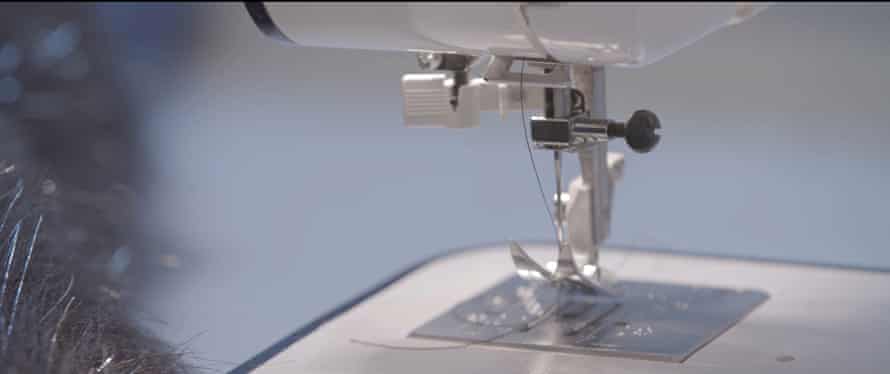why are furry animal cute science
Furry fandom, an obscure subculture united in their passion for all things anthropomorphic, can be lucrative business – because artisanal fursuits are haute-couture.
A single design can require up to 200 hours of work and sell for thousands of dollars. The business follows seasonal trends as well: one year it's neon colours, the next grumpy-looking characters. One season, everyone wanted to be a sled dog. It's all, of course, about the fur – even sharks, reptiles and birds are adorably fuzzy – and Los Angeles's fashion district has stores devoted exclusively to hundreds of varieties.
Sarah Dee, a master fursuit maker, flies out twice a year for sourcing, carefully handpicking $5,000 worth of furs (a single suit requires about 5.5 yards), dragging it across town in giant bin bags to the FedEx office and then stuffing 30-inch cardboard boxes addressed to Colorado, where she tailors suits to fulfill the fantasies of fur aficionados worldwide.
Menagerie Workshop, Dee's one-woman fursuit empire, caters to the full furry spectra, from hobbyists content with a pair of ears or a tail to lifestylers who go all out with role play like "scritching" (scratching and grooming).
Ranging from SpaceX employees to artists, her average customer is in their late 20s – in the "sweet spot" where they have enough money to spend but are not too tied down by family and work – though she's made costumes for people as young as 12 (with parents' consent).

To this day, Dee has brought more than 300 "fursonas" (furry personas) to life – including Baltoro the Fox, realistic with taxidermy eyes, hand-molded silicon paws and muzzle and digitigrade hind legs; Zeke the Hyena, cartoonish with hand-stitched stripes and airbrushed abs; and Blaze, a vixen with flirty eyelashes and curvaceously padded chest.
"What draws people in is that they can create this character which is a better version of themselves," she explains. "It's fun to just be silly, to use your imagination. To not have to conform to what people think being an adult is like."
A spirit animal of sorts, the fursona can be just about any real or mythological creature the individual feels connected to. Dogs and big cats never go out of style, though hybrids like "folves" (fox + wolf) and "drynx" (dragon + lynx) are catching on.
New costume makers enter the market every week and fursuits gets ever more advanced: at an additional cost, jaws can move, tails wag and eyes light up with LED-lights. No two creations are alike, though most can be machine-washed and kept shiny with a few strokes with a pet brush.
With more than 40 creations lined up, 2016 is already fully booked.
S tereotyped as less innocent than they look by mainstream media, furries tend to get a bad rap. A 2001 Vanity Fair article brought up both bestiality and plushophilia (sexual attraction to stuffed animals), and defined furry fandom as "sex, religion and a whole new way of life". The show Entourage presented a pink bunny fursuit as a sexual prop, and in CSI-episode Fur and Loathing in Las Vegas, furries are portrayed as fetishists mainly in it for the "yiff" – furry porn or sex.
"We researchers are horrified by that stuff," says Kathleen Gerbasi, a social psychologist who has researched the furry community extensively. "Because it really doesn't represent the reality we see in the fandom."
In her experience, people have either never heard of furries or they have a wildly distorted idea of it. As a result, fur fandom have become far more stigmatized than other similar nerd niches, such as anime and cosplay.
When Dee made her first costume – a bear, out of couch cushions – eight years ago, she was reluctant to be associated with the community, even as an artist. "Even I had some preconceived notions of like, 'Gosh, furries are a bunch of deviants; kind of weird,'" Dee remembers, laughing. "And I still have questions."
Even today, Dee, who quit her advertising job in Denver in 2012 for full-time fursuit making, doesn't use her real name for business.
"I do think 'fursectution' is real," says Gerbasi (who does not identify as a furry), using a portmanteau term referring to perceived persecution of the fandom from outside elements. "And I think it's because people are afraid of things they don't understand."
She recalls last year's suspected hate crime at Midwest Furfest in Chicago, which was evacuated after chlorine gas was leaked into the conference venue. Last year, she came across Facebook posts of people claiming they would bring guns to Anthrocon, the world's largest furry convention, and personally alerted FBI.

For Samuel Conway, a professional research scientist and chairman of Anthrocon, the skewed image of the furry world is explained by its defiantly personal/introvert nature: whereas all other fandoms are consumers of properties put out by studios, authors and networks, furries invent their own idols.
"Furry fandom is unique among fan cultures in that we are not consumers, but rather creators," Kage explains. "Star Trek fans are chasing someone else's dream. Furries create our own fandom."
Unfortunately, Conway explains, the public tend to be very suspicious of things they don't understand, with an inclination to presume it's in some way perverted.
"Furry fandom is not now – nor has it ever been – born of a sexual fetish," Conway insists. "There are no more or fewer persons of alternative sexuality in our fandom than anywhere else."
If anything, that cliche may be rooted in the community's inherent tolerance and proud reputation as a safe space: furry fans may simply not feel the need to hide who they are when they're among friends who won't judge. He cites comic book historian Mark Evanier: "Furries are fans of each other."
"People don't realize it, but the whole anthropomorphism is very mainstream," says Gerbasi, who spearheaded the multidisciplinary Anthropomorphic Research Project, which has studied about 7,000 furry fans from all continents, except Antarctica (which actually had a small furry gathering, too). While there are certain demographic trends – almost 80% are male, many work in science or tech, with a disproportionate share not identifying as heterosexual – the data, by and large, shows no indication that furries would be psychologically unhealthy.
"Cartoon animals have a universal appeal," says Conway, who fursuits as 'Uncle Kage': a samurai cockroach. "A love of animals and a fascination with the idea of them acting as we do transcends most national, geographic and religious boundaries."
While the fursuits are the most visible, they only make up only about 20% convention-goers, Conway adds: the rest are performers, writers, puppeteers, dancers, artists and "just plain old fans".
For a minority, however, it is more than that: 46% of furry fans surveyed by Gerbasi reported identifying as less than 100% human – with 41% admitting that if they could be not human at all, they would. Twenty-nine percent of them reported experiencing being a "non-human species trapped in a human body".
The parallels with gender identity disorder, upon which the hypothesis was modeled, were striking: much like some transgender individuals report being born the wrong sex, some furries feel a disconnect with their bodies, as if they were stuck in the wrong species. The condition, which Gerbasi et al labeled "species identity disorder", had a physiological component too, with many reporting experiencing phantom body parts, like tails or wings.
Gerbasi still has no answers to why these individuals feel they're not human, but stresses the importance for health providers to take them seriously, and without the ridicule that sometimes afflicts even her own research.

As the furry scene continues to grow – last year's Anthrocon attracted 6,348 visitors – the fans hope for greater acceptance.
"I want folks to realize that we are not any special breed apart, if you'll pardon the pun," says Conway. "We have scientists, lawyers, physicians, firefighters, soldiers, police officers, schoolteachers, construction workers, custodians, musicians, journalists – just about anyone that is likely to pass you on a city street may well be a furry fan."
Dee too, who remains at sidelines of the subculture but frequents conventions to advertise her business, agrees that the tendency to make furry fandom shorthand for sexual paraphilia is utterly misguided.
Throughout Menagerie's history, only one client ever asked for a suspicious alternation – a zipper between the legs – which Dee agreed to at $1,000 extra, adding that if he ever down the road needed repairs (otherwise offered at $40/hour), she wouldn't work on it, "because that's gross".
For most, Dee believes, furry fandom is more about escapism than anything else.
Slipping into a fursuit can be catharsis – allowing an otherwise shy and reserved person to transform into someone, or something, else – if only momentarily.
"People seem to find a family and a friend group there – people who like them for who they are, and for who they wanna be," she explains. "Maybe the character is this really buff tiger guy but it doesn't seem to matter the person is a shorter, overweight, typical nerdy-looking guy.
"They put on that costume and they just become someone completely outside themselves. It gives them anonymity to just, you know, be who they are and act how they want."
why are furry animal cute science
Source: https://www.theguardian.com/fashion/2016/feb/04/furry-fandom-subculture-animal-costumes